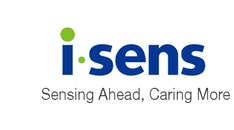
What Foods Spike Blood Sugar?
The management of blood glucose level is key to diabetes management. In evaluating how different foods directly influence post-meal blood glucose levels, the glycemic index is commonly used. The glycemic index indicates how much a carbohydrate-containing food raises postprandial (ie, post-meal) blood glucose level.1,2
Foods that are rapidly absorbed and easily digested have high glycemic index values and can cause temporary spikes in blood sugar levels.3 How a food is cooked can also influence the glycemic index, as well as other foods consumed along with it.4
What Are Examples of Foods that Spike Blood Sugar?1,4,6,7
- Sugary Drinks
Soft drinks such as coke contain high amounts of easily digestible sugar and cause spikes in blood sugar levels. Sweetened iced tea, certain types of fruit juice, and sports drink have high glycemic index values. Alcohol, especially beer, can also rapidly increase blood glucose levels.
- Desserts and Baked Goods
Certain types of desserts such as cakes and cupcakes with icing have high glycemic index values. Baked goods have varying effects on blood glucose, but muffins, pancakes, doughnuts, scones, and white bread can cause spikes in levels. Bread and baked goods made from whole wheat and multigrain take longer to digest and typically have lower glycemic index values.
- White Rice
Typically, white rice has a higher glycemic index than brown rice which takes longer to digest. However, please note that rice has varying values of glycemic index depending on the type. For instance, certain brands of basmati white rice have significantly lower values than certain brands of jasmine white rice.
- Potato
Potatoes are known to have a high glycemic index, and this is true of various forms and cooking methods of potatoes. Boiled potatoes, mashed potatoes, French fries, and baked potato chips all can spike blood sugar levels.
- Certain Types of Fruit
Fruits typically have higher glycemic index values – for instance, fresh peaches, pineapples, and bananas have high values. Dried fruits such as raisins, dates, and figs are high in sugar and can also cause temporary spikes in blood glucose levels.
- Sugars and Syrups
Table sugar, corn syrup, rice malt syrup, glucose syrup, maple flavored syrup, and certain types of honey can cause rapid increases in blood glucose levels.
Should You Avoid These Foods?
Individuals with diabetes have diminished ability to control postprandial blood glucose levels.8 Although how rapidly a food raises blood glucose may not necessarily equate to long-term fasting glucose levels or hemoglobin (Hb) A1c levels,5 studies have found that low glycemic index diets can improve various parameters of diabetes.1,8–10 Considering the importance of glycemic control in diabetes management, it may be beneficial for individuals with diabetes to reduce or avoid the consumption of foods that may cause spikes in postprandial blood sugar levels.
|
References: |
(Disclaimer)
The content of this article is intended to provide a general information and knowledge on the subject matter. The views expressed in newsletters, articles, and blogs in the i-SENS USA website are not necessarily those of i-SENS Incorporated, i-SENS USA Incorporated or our publishers. Medical or nutritional information on i-SENS USA website is not intended to replace professional medical advice – you should always consult a specialist with any questions about your specific circumstances.





Add a comment